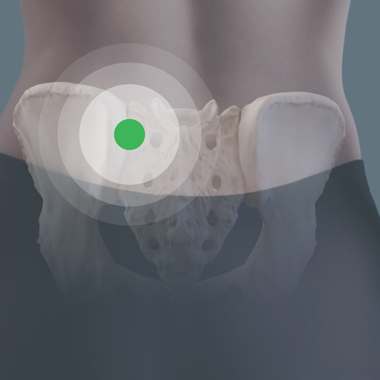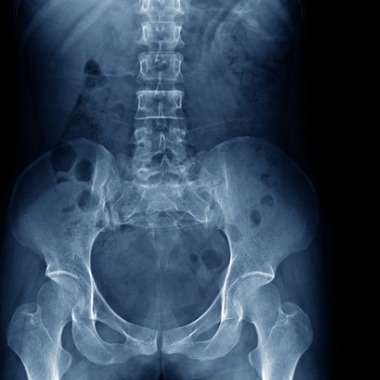MARCH 5, 2021
How is SI Joint Dysfunction Diagnosed?
Low back pain is one of the most common reasons people see a doctor or miss days at work. It can be caused by several conditions, such as a lumbar herniated disc, arthritis, injury or a degenerative condition. Unfortunately, sacroiliac (SI) joint dysfunction has symptoms that often mimic these conditions, making it extremely difficult to diagnose.

SI Joint Fast Facts
- SI joint dysfunction is seen in 1 in 3 patients with chronic low back pain.
- SI joint dysfunction is caused by the hip moving too much or too little.
- The SI joint is located right below the beltline where the hip joints the tailbone, making it easily confused as a spinal condition.
Diagnosing the SI Joint
SI joint dysfunction generally refers to pain in the SI joint region caused by abnormal motion in the sacroiliac joint. This is thought to cause chronic low back pain, groin pain, and/or leg pain, all of which can negatively impact one’s quality of life.
The pain patterns of SI joint dysfunction are very similar to those from nerve irritation or damage, lumbar herniated disc, or hip bursitis. Unfortunately, pain in the SI joint has been traditionally overlooked, and physicians tend to prescribe treatments that address spinal conditions. Of course, these interventions fail or only bring temporary relief since they do not address the actual cause of the pain: the SI joint.
Diagnostic Imaging Tests
Diagnosing the SI joint begins with a collected medical history and a physical examination. It is crucial to document any current pain and symptoms you are experiencing. Imaging tests that may be helpful in the diagnosis of SI joint-related conditions include:
- X-Rays
- CT-scans
- MRIs
SI Joint Injections
After a medical history and a physical exam show there is evidence of SI joint pain, additional testing will be performed to confirm the sacroiliac joint as the pain source, such as injections. There are two types of SI joint injections:
Diagnostic SI Joint Injections
Diagnostic SI joint injections are intended to help determine and confirm if your pain is stemming from your SI joint. If you experience 75-80% pain relief immediately after the diagnostic injection, this will then indicate that the SI joint is the source of your pain.
Therapeutic SI Joint Injections
Therapeutic SI joint injections are designed to treat your symptoms and provide temporary relief. A therapeutic SI joint injection is a mixture of local anesthetic and an anti-inflammatory steroid medication (corticosteroid).
LinQ SI Joint Stabilization System
If lasting pain persists, your doctor may recommend surgery, such as the minimally invasive procedure with the LinQ Stabilization System. The LinQ procedure involves implanting one small bone allograft into the SI joint to stabilize and fuse the dysfunctional joint.
The entire LinQ procedure is done through a single, small incision on the patient’s back. Patients are able to leave the hospital the same day of surgery and can usually resume daily living activities within a few weeks.
Physicians, contact us today if you would like to learn more about how to begin offering this groundbreaking treatment to your patients.
If you are a patient suffering from SI joint pain, contact us to find an interventional pain physician who specializes in SI joint treatment. Call our Patient Support number at 855-248-7246.



